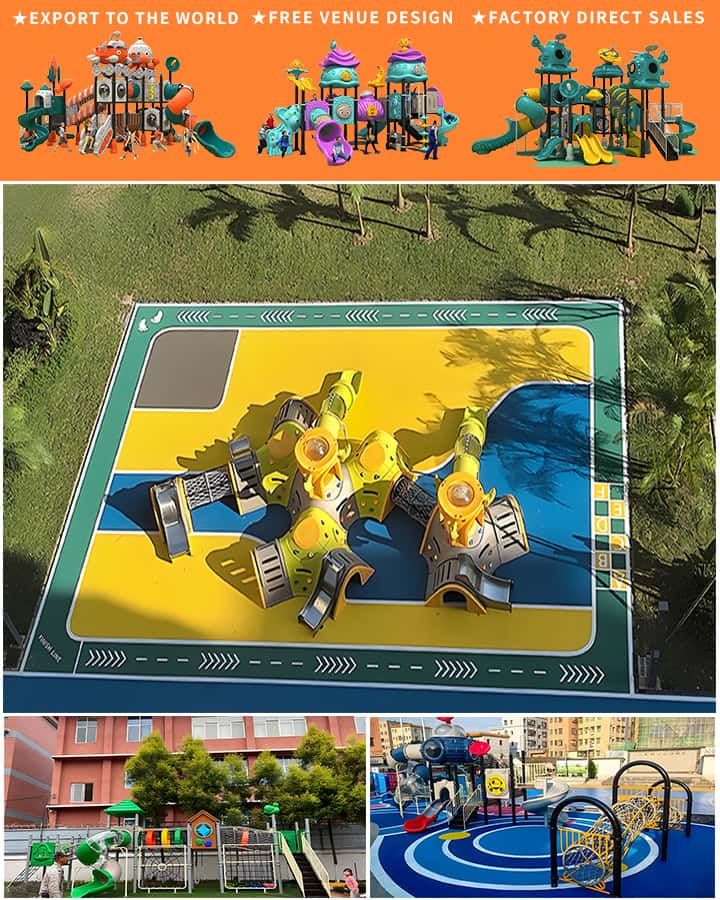Playgrounds are vibrant hubs of activity where children gather to explore, play, and develop essential motor skills. Central to these experiences are the playground equipment pieces that provide endless entertainment and physical challenges. Let’s delve into a comprehensive list of playground equipment names, each contributing uniquely to the joy and development of our younger generation.
1. Swings
Swings are perhaps the most iconic piece of playground equipment. Whether it’s a traditional belt swing or a modern bucket swing, they offer a simple yet exhilarating experience of soaring through the air. Swings help improve balance and coordination while providing a sense of freedom and adventure.
2. Slides
Slides come in various shapes and sizes, from gentle toddler slides to adventurous spiral slides. They are a favorite among children for their thrilling descent and the sheer joy of reaching high speeds momentarily. Slides can also be integrated with climbing structures, adding layers of fun and challenge.
3. Jungle Gyms
Jungle gyms, also known as climbers or climb-and-play structures, feature interconnected ladders, bars, and platforms. These structures encourage physical strength, coordination, and problem-solving skills as children navigate through them.
4. Seesaws

Seesaws, or teeter-totters, involve two seats mounted on a pivot point. They teach kids about balance and cooperation when used with a partner, making them an excellent choice for social interaction and basic physics education.
5. Merry-Go-Rounds
Merry-go-rounds are circular platforms powered by children pushing them along. They promote teamwork and are perfect for developing upper body strength. The continuous motion can be mesmerizing to young minds.
6. Climbing Walls
Climbing walls come in various difficulties, from small plastic rocks for beginners to tall, complex structures for advanced climbers. They help build confidence, endurance, and muscle strength. Some playgrounds even include rope climbs for added variety.
7. Spring Riders
Spring riders, also known as rocking animals, are designed to mimic riding a horse, elephant, or other creatures. They provide a fun way for children to engage in imaginative play while working on core stability and leg muscles.
8. Sandboxes
Sandboxes are essential for creative and sensory exploration. Children can use toys like shovels, buckets, and molds to build sandcastles, dig trenches, and more. This activity fosters fine motor skills, creativity, and cooperative play.
9. Balance Beams
Balance beams challenge children to walk across a narrow, elevated surface without falling off. They are crucial for improving balance, coordination, and concentration. Low beams are suitable for younger children, whereas higher ones provide more significant challenges for older kids.
10. Spinning Discs
Spinning discs allow multiple children to sit and spin together. They enhance social interaction and are great for building core strength and balance. The spinning motion is delightful and helps kids get a mild workout.
11. Carousels
Carousels are larger, often manually operated rides featuring animals or cars that children can sit on. These structures bring a touch of nostalgia and community fun, promoting gentle exercise and social bonding during playtime.
In conclusion, the diverse array of playground equipment—from swings to climbing walls—serves not only to entertain but also to support the physical development and social skills of children. Each piece offers unique benefits, ensuring that playgrounds remain spaces where fun and learning go hand in hand. Whether it’s the thrill of sliding or the challenge of climbing, every child can find something to cherish in their playground adventures.




